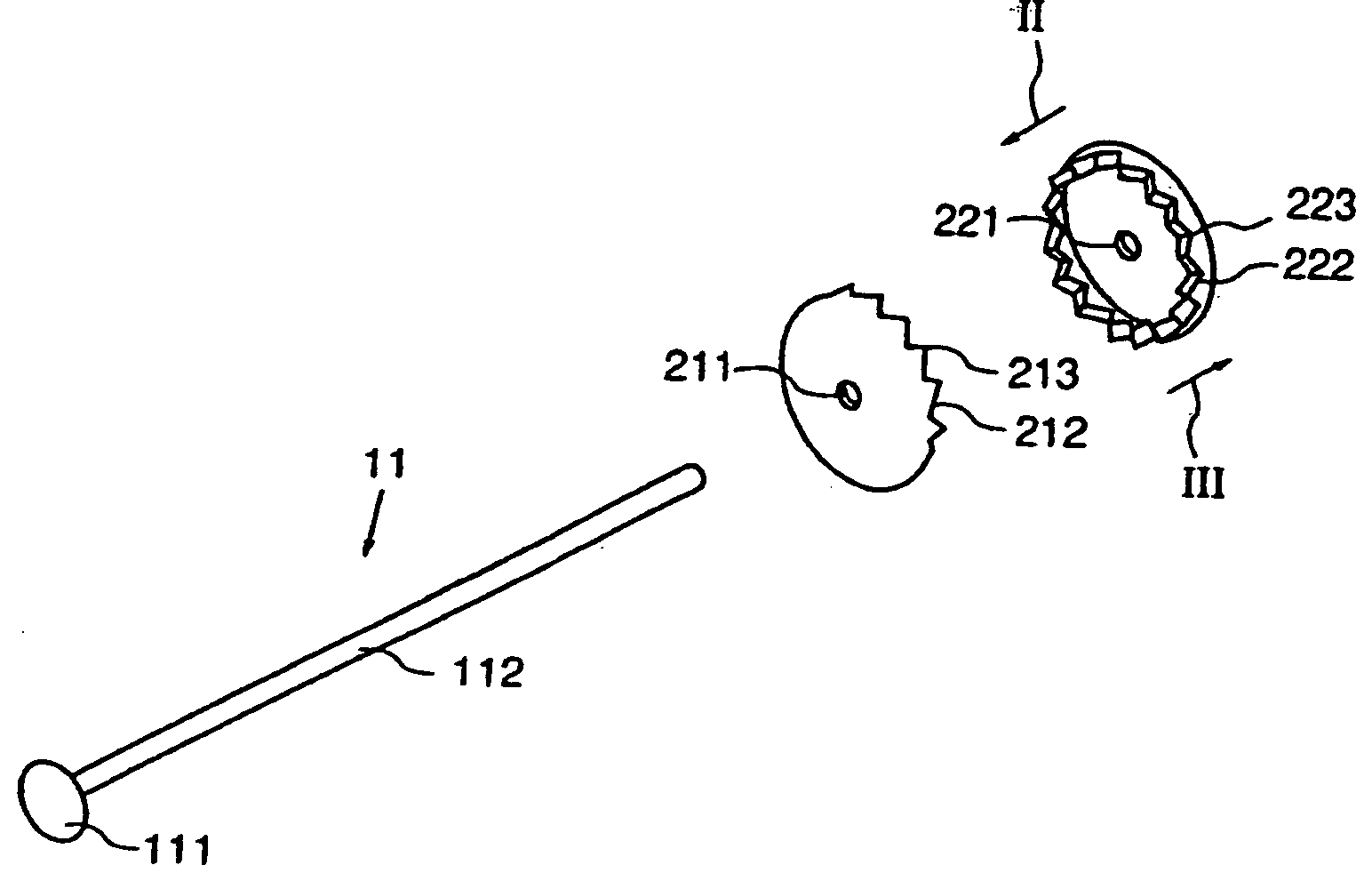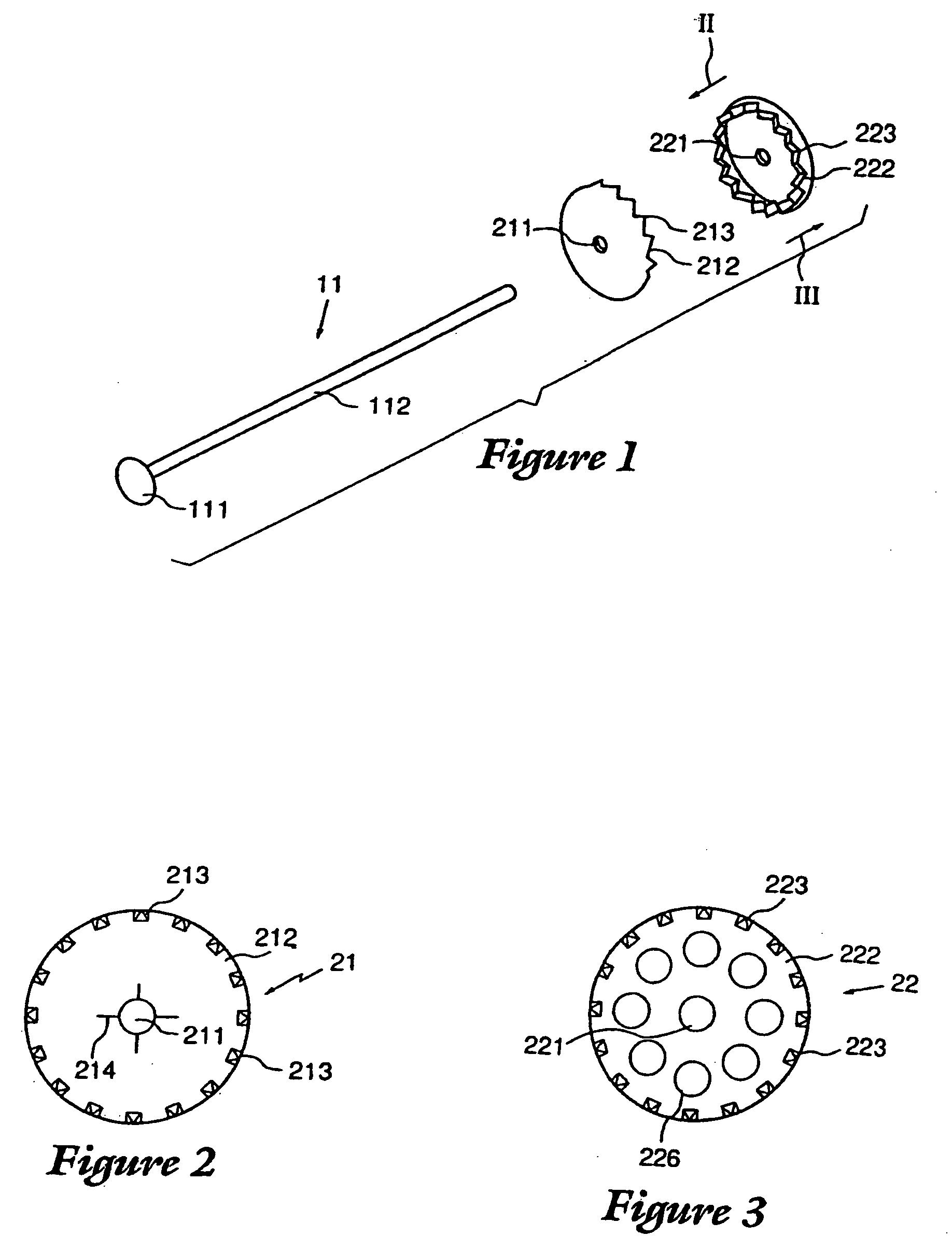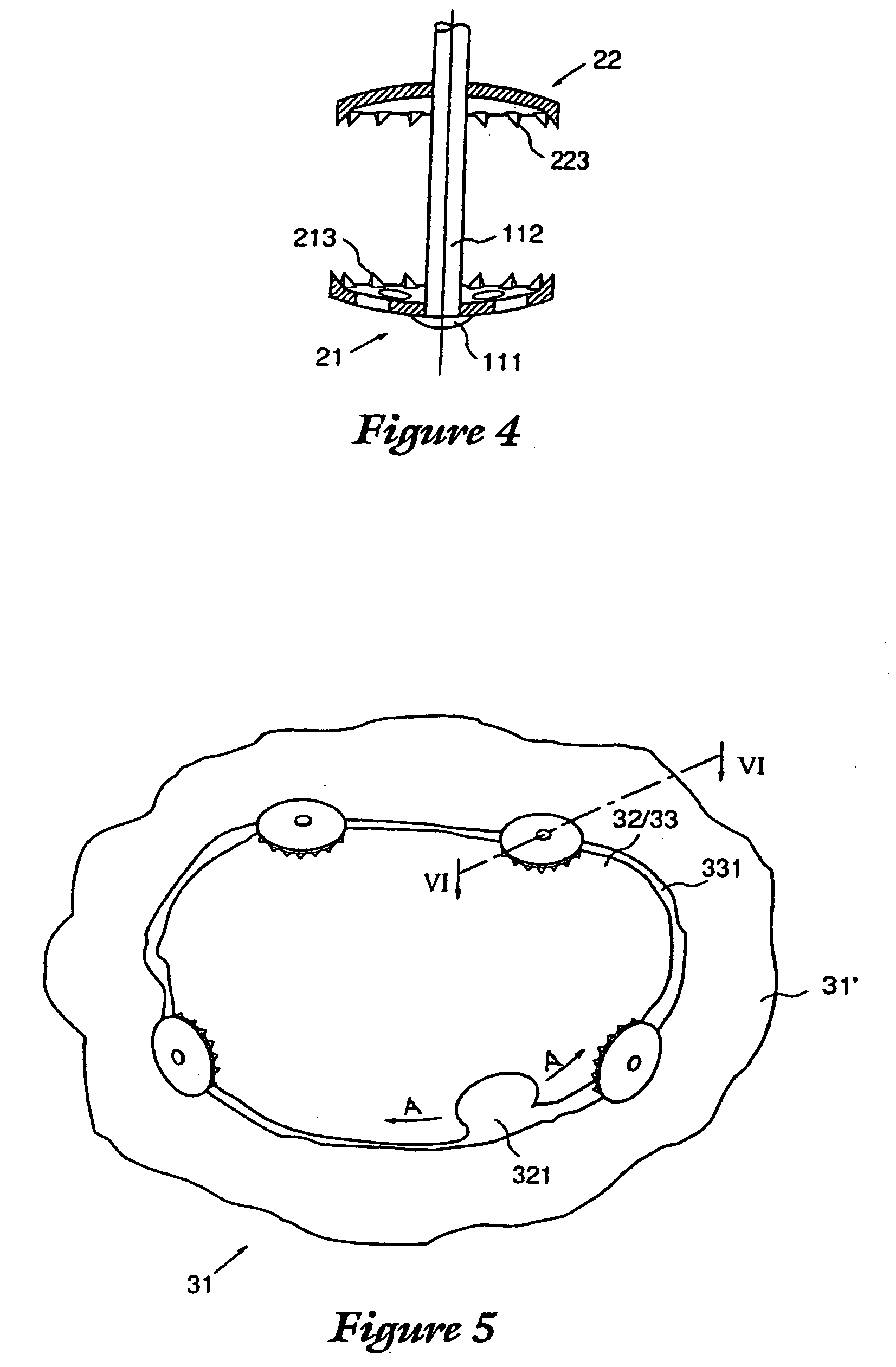Device for postoperative fixation back into the cranium of a plug of bone removed therefrom during a surgical operation
a technology of cranial plug and surgical operation, which is applied in the field of devices for postoperative fixation back into the cranial plug of a surgical operation, can solve the problems of scalp infection, two halves not fused very well, and the contact between the plug and the rest of the cranial cavity is relatively unstable, so as to achieve stable mounting, easy and rapid manipulation, and save material
- Summary
- Abstract
- Description
- Claims
- Application Information
AI Technical Summary
Benefits of technology
Problems solved by technology
Method used
Image
Examples
Embodiment Construction
[0019] A device for postoperatively fixing back into the cranium a plug of bone removed therefrom during a surgical operation comprises a pin 11 and two concavoconvex disks 21 and 22. The pin comprises a shaft 112 and a head 111, Disk 21, the inner disk, is mounted on the shaft first and comes to rest against the inner surface of the plug and of the rest of the cranium that are to be united. Disk 22, the outer disk, is mounted on the shaft next and comes to rest against the outer surface of the plug and the rest of the cranium. There is a hole 211 through the center of each disk 21 and a hole 221 through the center of each disk 22. The shaft 112 of pin 11 extends through the holes 211 and 221 of the disks in the assembled device. A row of teeth 213 extends along the edge 212 of the concave side of disk 21, and a row of teeth 223 extends along the edge 222 of the concave side of disk 22. As will be evident from FIGS. 1 and 4, disks 21 and 22 are mounted on the shaft 112 of pin 11 wit...
PUM
 Login to View More
Login to View More Abstract
Description
Claims
Application Information
 Login to View More
Login to View More - R&D
- Intellectual Property
- Life Sciences
- Materials
- Tech Scout
- Unparalleled Data Quality
- Higher Quality Content
- 60% Fewer Hallucinations
Browse by: Latest US Patents, China's latest patents, Technical Efficacy Thesaurus, Application Domain, Technology Topic, Popular Technical Reports.
© 2025 PatSnap. All rights reserved.Legal|Privacy policy|Modern Slavery Act Transparency Statement|Sitemap|About US| Contact US: help@patsnap.com



